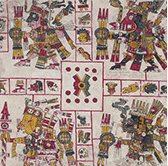The FITS Space Color
When an image is scanned by a scanning device the color of each single point is divided into its primary components Red, Green and Blue according
to the the RGB Color Model. The resulting matrix
has the same size as the original but THREE color information, corresponding precisely to the components R, G and B and size n x m x 3
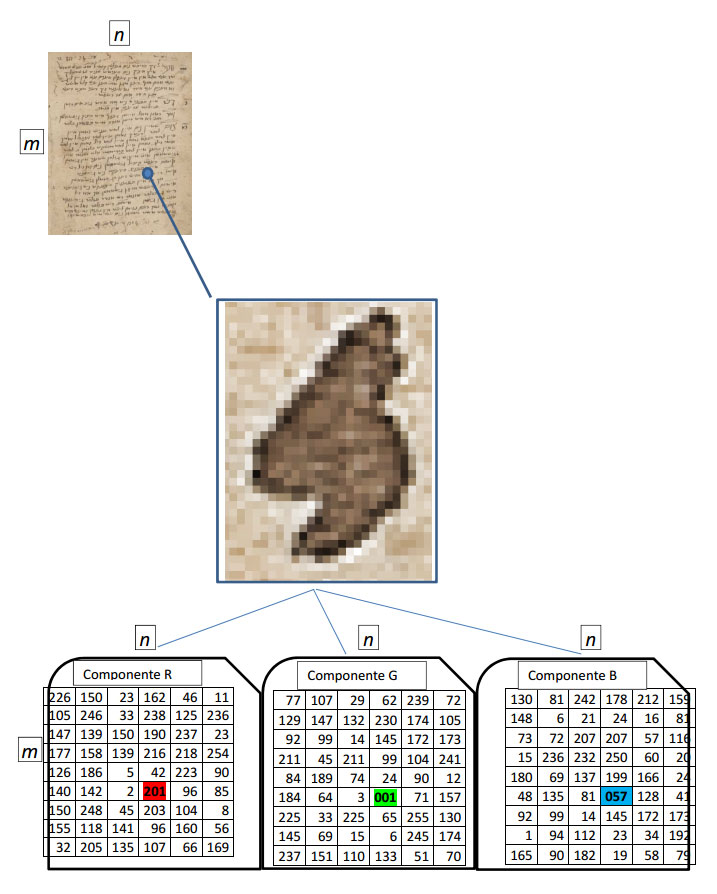
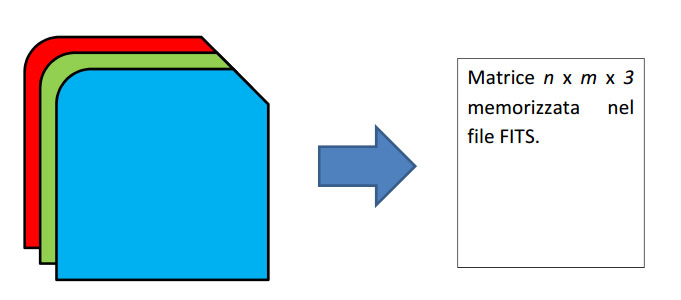
In RGB color model every color is identified by a triplet of values between 0 and 255 (for a more efficient management in
binary format color levels must be powers of 2, and 2 ^ 8 = 256).
These values represent a point in a "cube of colors" like the one shown below:
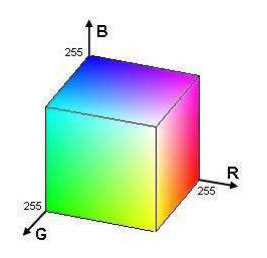
where the axes represent possible variations of the corresponding color from the lighter shade to the darkest. With this system the color of each point is stored using 3x8 = 24 bits which allow a total of about 16 ML of possible colors. For example. the value of R, G, B (0,255,0) indicates the darkest green, while (50,250,20) indicates a lighter shade.
RGB model is the most common way to represent colors, but there are others models: for example using CYMK models the color of each point is divided into four base components (Cyan, Yellow, Magenta, Black)
In the graph below we can see how much of the visible spectrum can be represented using the most common RGB models
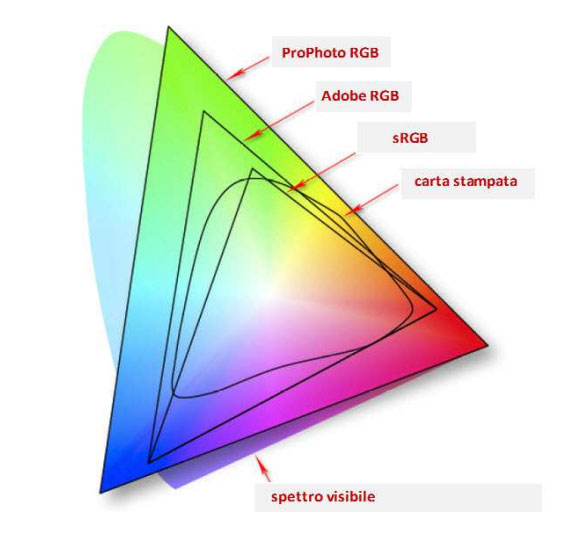
IOur project uses the sRGB color model, an easy but powerful way to representing most colors used in the manuscripts.
This is the encoding used by default. Other color models can be used by storing the value in the keyword COLORMAP. Naturally the program that read the FITS file must be able to manage the color system used why this format has not a standard system to save a look-up table.
We think that this is not a weakness why allow at this format to be very flexible, able to adapt at new or modified standards and able to work with all operating system.
In heritage environment the color is an important information that must be preserved as much as possible, and it is important also reproduce, on paper or in a monitor, as faithfully as possible to the original.
Every device that captures or displays color has a different sensitivity and the same image scanned with different devices may be slight differences in colors, therefore to limit as much as possible these differences there are methods like ICC Profile or using reference images.
An ICC profile is a set of data that characterizes a input or output color device. Generally is a file containing information which define the real response of each element in the input/output device at a range of calibration colors. These information are helpful to reconstruct the original colors.
Information in ICC profile are a very complex structure and are not fully standardized, so in many cases it is better to use one o more reference images containing a series of standard colors that allow a precise calibration of the colors.
References:
- Color Model
https://en.wikipedia.org/wiki/Color_model - Color Management
https://en.wikipedia.org/wiki/Color_management - ICC Profile
https://en.wikipedia.org/wiki/ICC_profile



